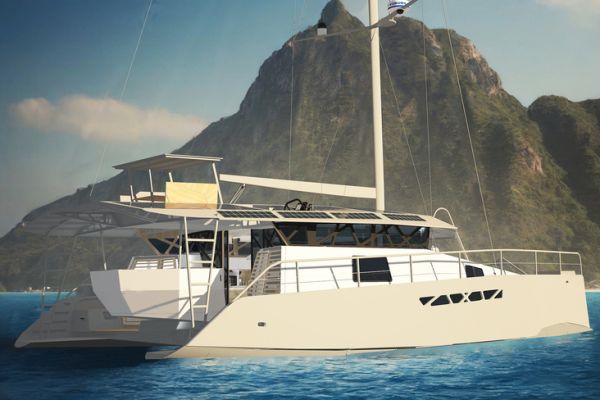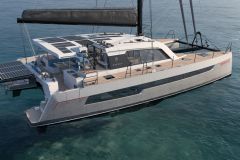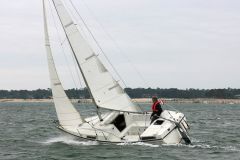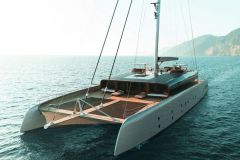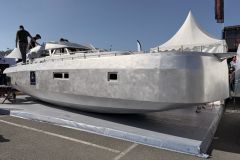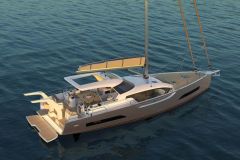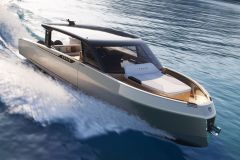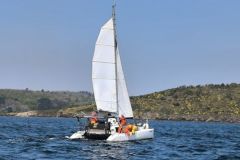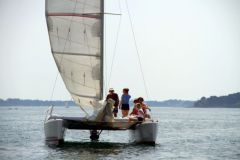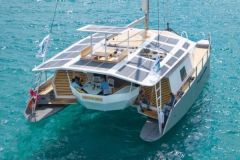The boating market is evolving towards more environmentally-friendly sailing solutions. Cataruga's Tortue 147 catamaran embodies this trend, with a design focused on energy autonomy and sustainability. Focus on its strengths.
Choosing aluminum: strength and durability

Aluminum is the material of choice for offshore hulls. Unlike resin or laminate hulls, aluminum offers superior resistance to impact and corrosion. Fully recyclable, it also minimizes boat maintenance. As boatbuilding experts point out, aluminum absorbs a high level of energy before undergoing permanent deformation, making the Tortue 147 particularly well-suited to rough conditions on the high seas.
By comparison, aluminum can withstand up to 900 units of absorbed energy until fully punched, compared with just 20 for a conventional laminate, making it an indispensable ally for safe, long-distance travel.
Mixed energies: solar, hydrogenation and hybrid engines

The Tortue 147 is equipped with an array of solar panels generating up to 5.5 kW. This energy is fed into 20 kW lithium batteries, which enable the boat to sail for over two hours at a speed of 6 knots thanks to its electric motors. In addition to solar power, hydrogenation is used to recover energy while sailing. As a result, this catamaran guarantees energy autonomy that exceeds on-board consumption, making it an ecological model of the first choice.
This combination of energy sources reduces dependence on fossil fuels, limiting exhaust emissions and enabling cleaner navigation.
Paulownia: an ecological and innovative wood

The choice of Paulownia for certain elements of Tortue 147 is no coincidence. This tree is known for its ability to absorb ten times more CO2 than other species. What's more, it regenerates the soil and does not require the felling of tropical forests. This wood, used for centuries in Asia, has remarkable insulating properties and an excellent strength-to-weight ratio.
For yachting enthusiasts conscious of environmental impact, the use of Paulownia on this catamaran is a sustainable solution, combining performance and ecology.
Technical specifications: a yacht designed for comfort and autonomy

With a length of 14.70 meters and a beam of 7.85 meters, the Tortue 147 offers spacious living areas. Equipped with five cabins for up to nine people, it offers sailing comfort ideal for long crossings. Its draught of 1.45 meters makes it particularly well-suited to anchoring in shallow waters.
The catamaran also features 2 1.2-ton ballast tanks, ensuring optimum stability even in difficult sea conditions. Fresh water tanks (1.4 tons) and fuel tanks (up to 1 ton) ensure long autonomy, reinforcing the Tortue 147's ability to sail long distances without frequent stopovers.
Innovations on board: modern, connected comfort

On board, comfort is optimized thanks to centralized management systems, notably the Shipheart panel, which enables real-time monitoring of energy consumption and safer navigation. Every item on board is geolocated and time-stamped, enabling precise traceability and constant monitoring of equipment.
In addition, the Tortue 147 offers modern amenities such as a fully equipped galley "just like home", an owner's cabin in the nacelle, and areas dedicated to water sports such as paddles, diving equipment and an underwater drone.
The first catamaran is currently under construction in the Tunisian shipyard, and will be presented at the next Grande Motte boat show in April 2025.

 /
/ 